Sourdough Starter and Baking Bread
Like many people stuck at home during the coronavirus event, I decided to play around with sourdough. This requires making a sourdough starter, which is a 7- to 8-day process that creates the cultivates the wild yeast in a form that can be used for baking. Since wild yeast are present in all flour, the easiest way to make a starter is simply by combining flour and water and letting it sit for several days.
Note: This is an ongoing post that will be updated intermittently for a week or so, with the post date being the day that it starts.
I followed a guide from Feasting At Home available here: https://www.feastingathome.com/sourdough-starter
Day 1: I mixed one cup of bread flour with a half-cup of filtered water. During mixing, I ended up having to add a couple tablespoons of water, because the cup of flour was a little more weight than I expected and it was thicker than it should have been, making it very hard to incorporate.
After 24 hours, there were a few bubbles visible, which means the starter is working, and I decided to let it go another 12 hours. Most of the recipes I reviewed suggested letting it go 24-36 hours until you see activity.
Day 2: After feeding the kids, I checked the starter and it was riddled with bubble holes. It had also grown from 6 oz. to about 12 oz in size. Time to feed it!
I removed about half of it and weighed it, then added that same amount of new flour and water to it, mixing it well and putting it into a clean jar. By two hours later, the amount of pores in the starter had increased significantly and it had rise quite above the rubber band I used to indicate its height after putting it in the jar.
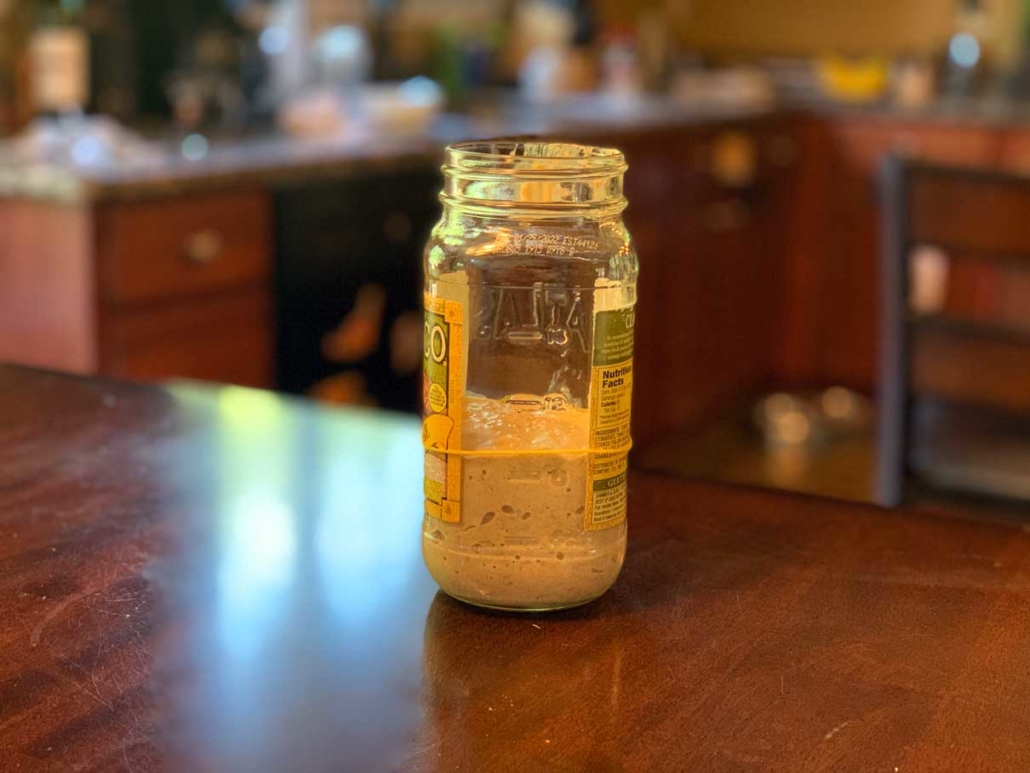
Day 4: Normally, I would start feeding it three times per day on the third day of feeding (day 4), but the starter wasn’t growing as fast as I’d like for it to, or more specifically, it wasn’t falling back down within 12 hours (which is when you should feed it again), so I waited until the following day to see it was doing better.
Day 5: The starter is now falling about 1.5″ after it rises, and is now rising to about twice its original volume after feeding it. I fed it around 11:00 in the morning and before going to bed around 11:00 that evening.
Day 6: When I woke up, the starter and risen and fallen again, which seems to indicate it’s on a short enough cadence that it’s good with twice-per-day feedings. I should be able to make bread in a three or four days! As a rule, I’m pulling out 100g of starter, measuring 100g of bread flour and 100g of water to mix in, incorporating it all and that becomes my batch of starter. I want to look into making sourdough pancakes starting next week because I really hate throwing away so much starter each day.
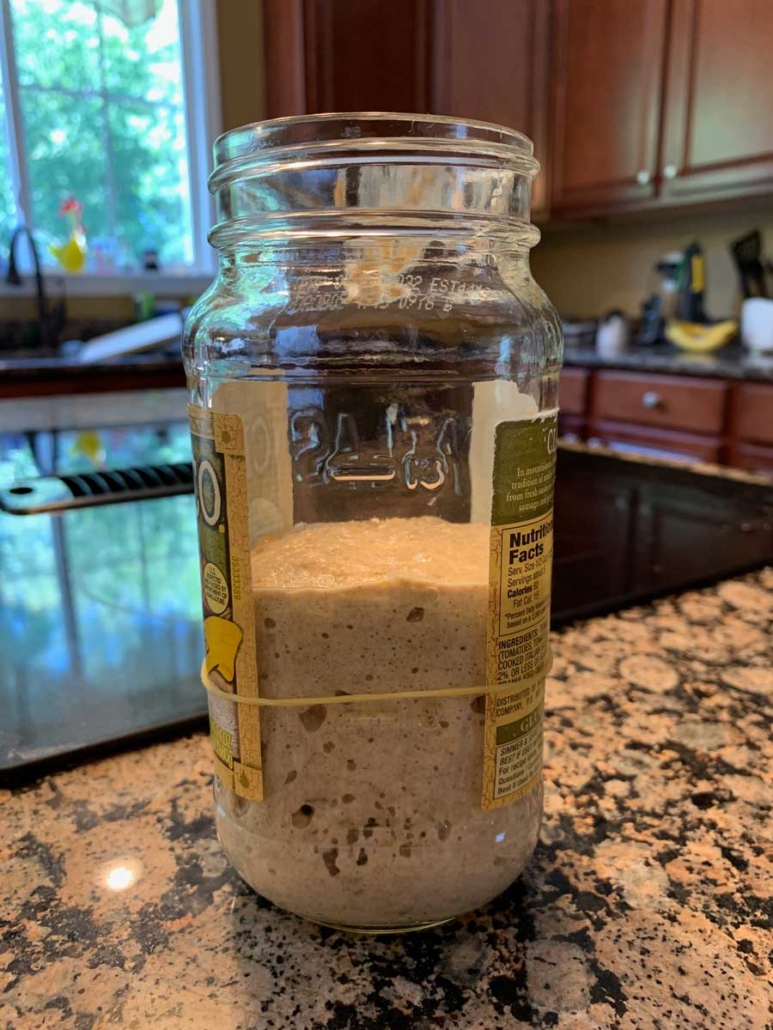
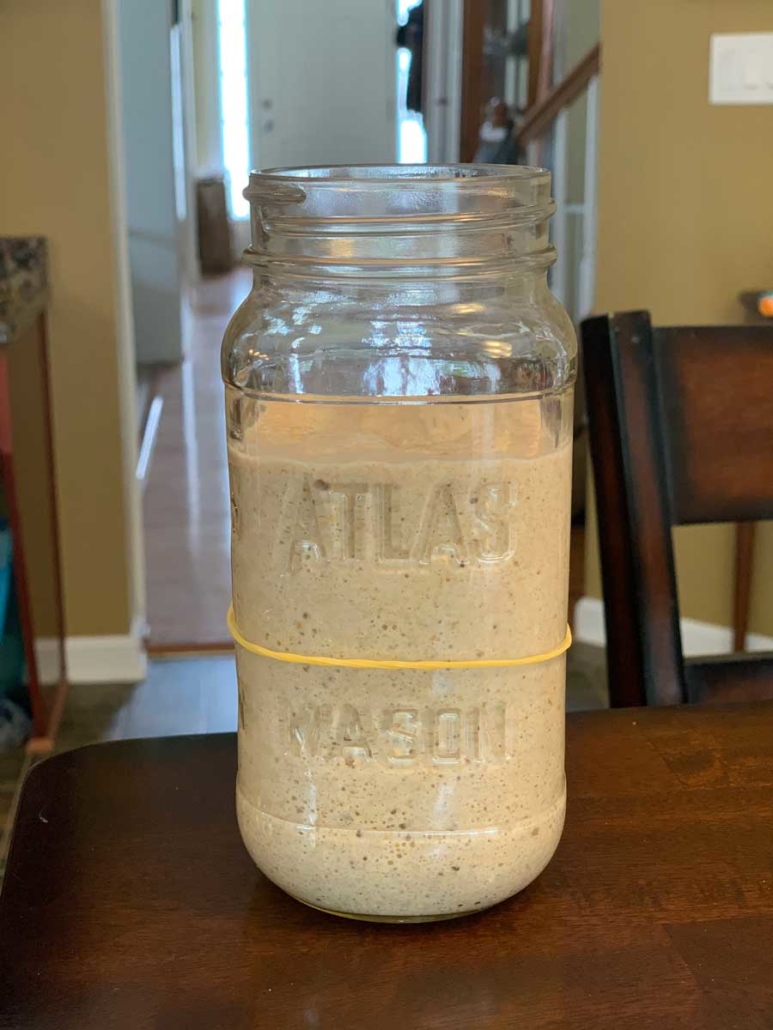
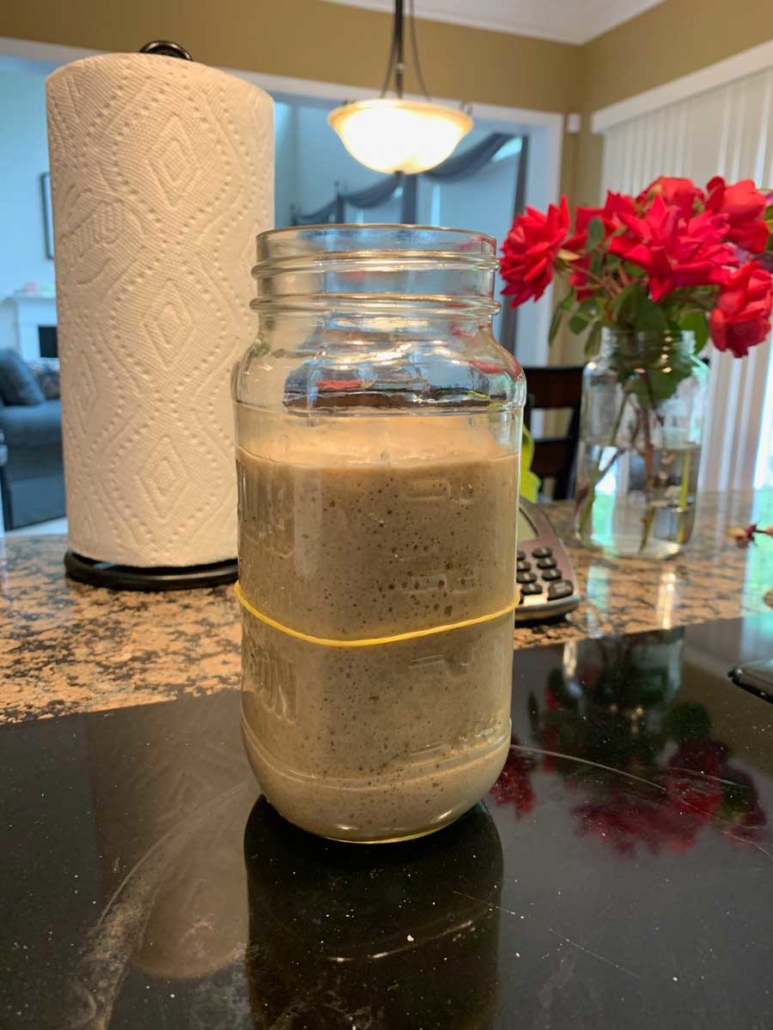
If I’m not baking bread daily (and I won’t have time to) than there’s no reason to keep the starter out at room temperature. If I put it in the fridge, I can feed it weekly (much less costly and time-consuming) but I’d need to take it out a couple days in advance and feed it when I want to bake bread. I’ll have to figure out the right balance for all of this.
Day 7: My starter didn’t pass the float test, so I decided to feed it daily until the following weekend to let it establish more, and then I’ll make bread with it.
Day 12: OK, it’s time to try this. I fed the starter around 4PM to get it active, and then after dinner, I mixed 160g starter with 400g flour, 230g water, and 5g salt. After kneading the dough for 10-12 minutes, I put it in a mixing bowl to prove for four hours, then came back and shaped it. I put it into a floured proofing bowl and tossed it in the fridge overnight.
Day 13: I got up and started the kids on breakast, took the bread out, and preheated the oven to 445. Once the oven was heated, I scored the bread and put it on a baking tray, placing it in the oven above another baking tray with water in it. After 32 minutes, here’s what I got:
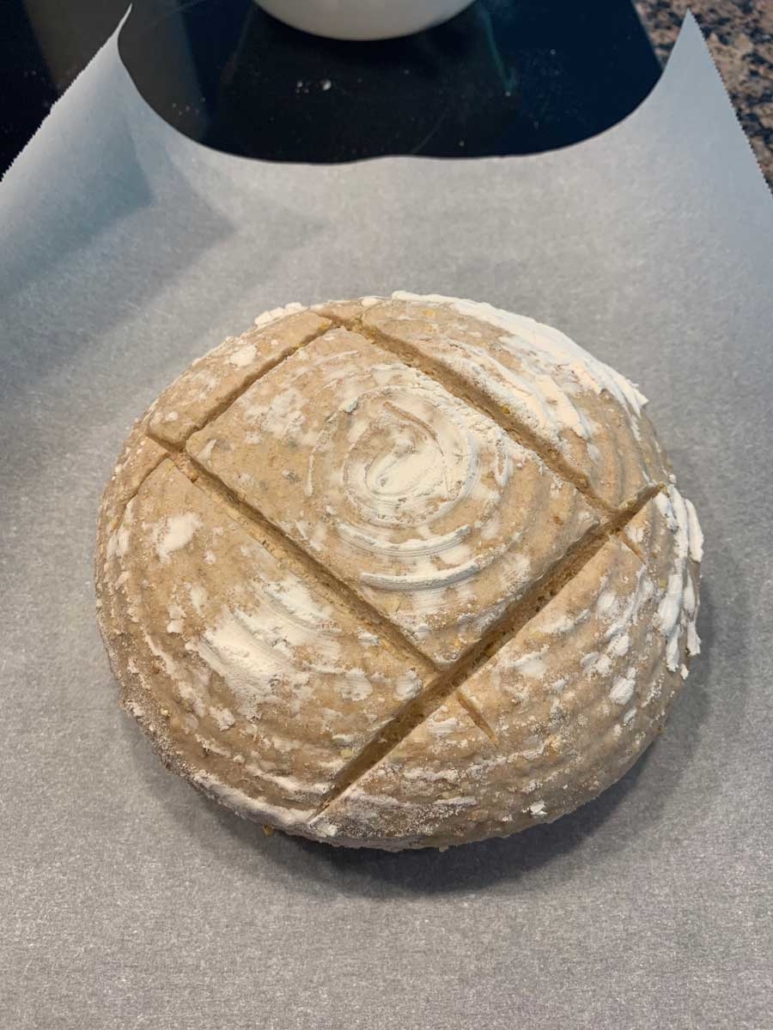

It’s not bad. The bread is a little dense. I don’t know if I didn’t knead it enough, or if the starter was a little past its peak, or if it was in the fridge too long during the second proving. I’ve already created another batch to try again this evening. The work effort is not bad at all, in fact, less than I thought it would be.
I still can’t see doing this more than a couple times per week though.
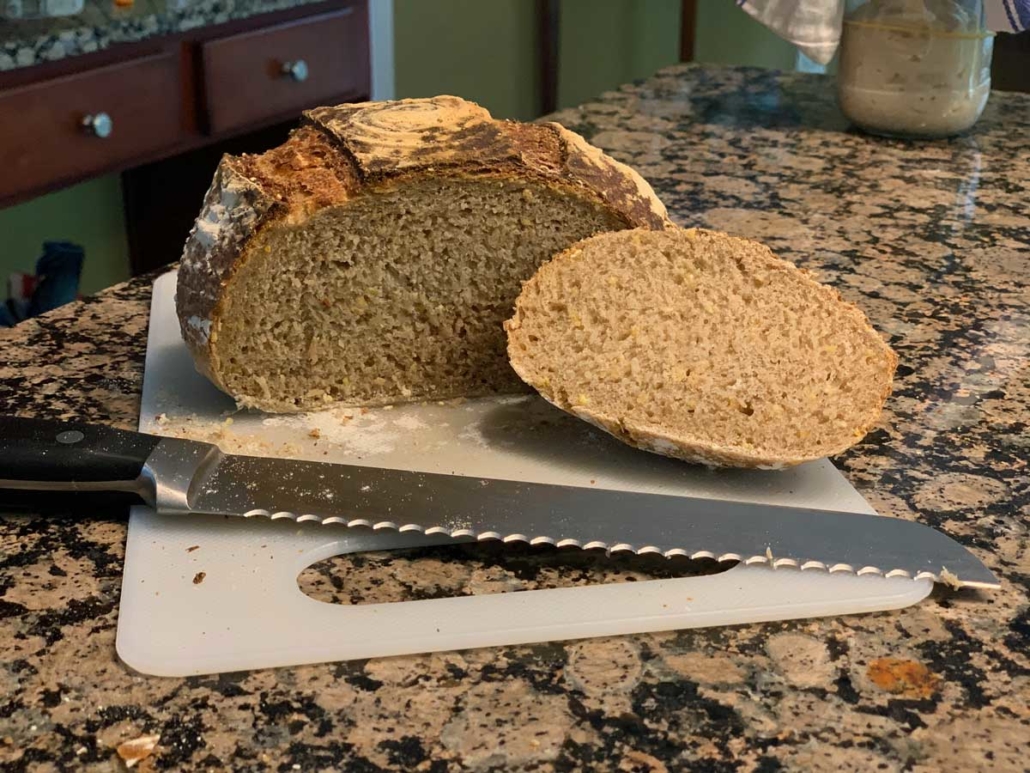




I’m waiting for the “Little Shop of Horrors” report…